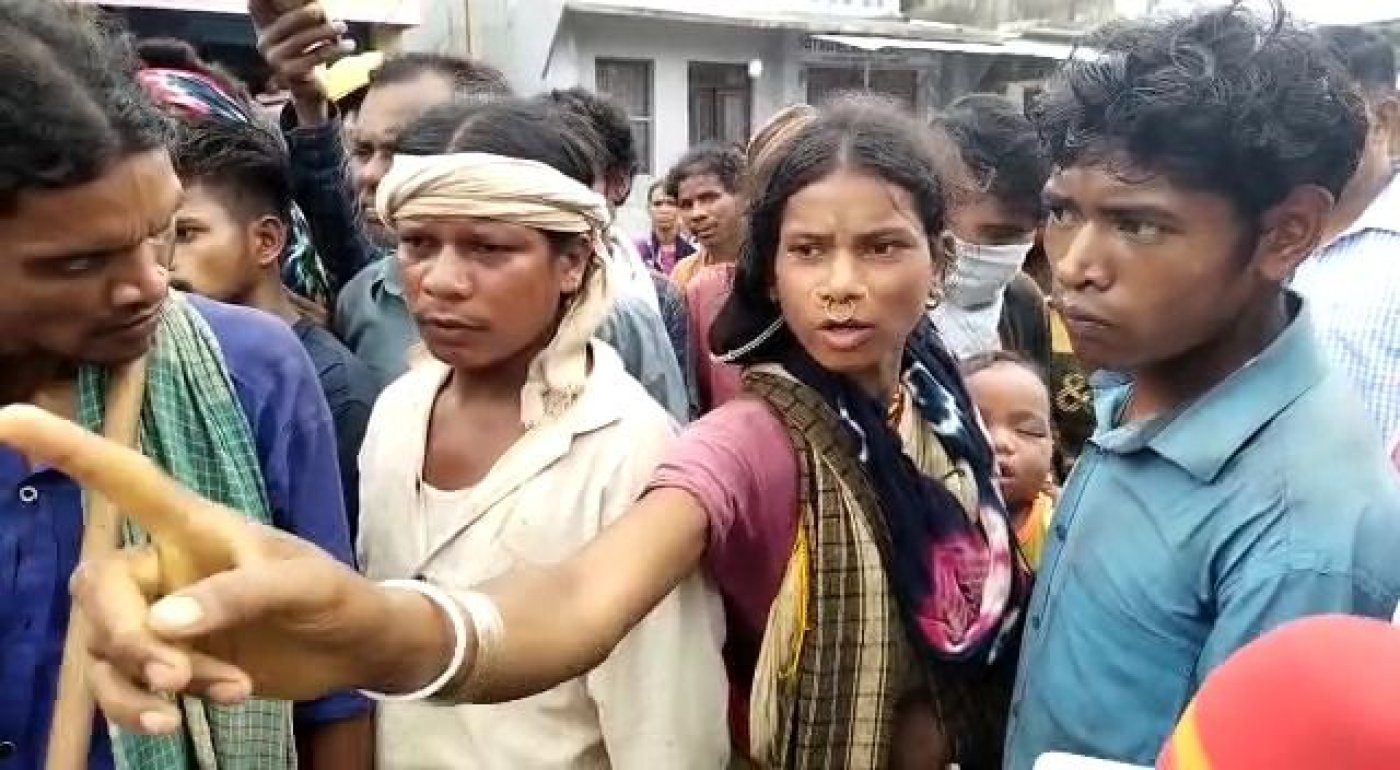Rayagada (Odisha): On 5 August, Daitari Gouda, a 62-year-old village leader, received anxious visitors at his home in Lakhpadar, an obscure village of 270 people nestled in a lush southern Odisha forest. They told him that two young Adivasi-Dalit activists, aged 23 and 24, who were supposed to be back by evening on the same day, had failed to return after a 50-km journey to the nearby town of Kalahandi.
“There is no phone connectivity in our village,”said Gouda, who said the village did not have a road or electricity either. “We trek down a small hill, cross a small river to get a network.”
Almost 12 hours after their departure, with families increasingly concerned over their unexplained absence, news eventually filtered through that both men had been detained by the police in the town of Lanjigarh, also in the district of Kalahandi and nearly 40 km north of Lakhpadar and 400 km south of Odisha's capital, Bhubaneshwar.
When the two men, Krushna Sikaka and Bari Sikaka, did not return that night the villagers were worried. “Through different sources, we learned that they were picked up by the police from the town market area,” said Gouda.
Krushna and Bari had gone to invite others to a meeting scheduled for 9 August 2023 to commemorate the International Day of the World's Indigenous Peoples and protest three bauxite mining leases on three hills that the Biju Janata Dal government of chief minister Naveen Patnaik granted on March 1.
The following day, 6 August, villagers searched for Krushna and Bari, with about 200 carrying axes and bow and arrows, as they often do, they said, eventually gathering at the K Singhpur police station demanding answers.
“But instead of divulging any details, they filed charges against the villagers themselves, including a strict law like the UAPA,” said Gouda, referring to the Unlawful Activities (Prevention) Act (UAPA), 1967, India’s anti-terrorism law, which makes bail after arrest difficult.
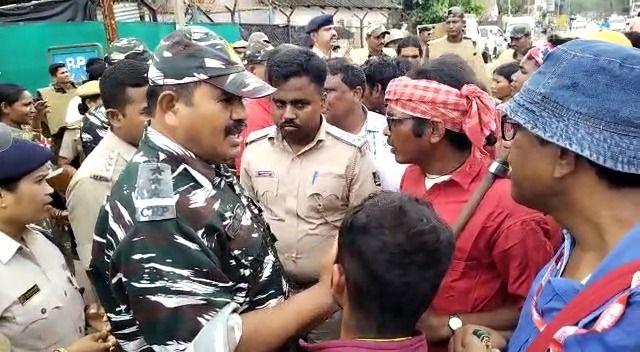
“I received credible information that around 200 people armed with deadly weapon i.e axe (sic) have organised in the village to protest the police legal action against LWE (left wing extremists),” says a first information report (FIR) filed by inspector Sumati Mohanty of K Singhpur police station on 6 August, alleging protestors brandished axes, threatened to harm officers on duty, verbally abused them and threatened to set the police station on fire.
Nine Dalit-tribal activists from the village found themselves facing a criminal case quoting 13 sections, including attempted murder, under the Indian Penal Code, 1860, and three sections 10 (membership of an unlawful association), 11 (dealing with funds of an unlawful association) and 13 (taking part in, committing or advocating, abetting, advising or inciting unlawful activity) of the UAPA.
Thus far, the police have made one arrest in this case, but with investigations underway and the UAPA invoked against nine, others feared they could be arrested at any time.
Within a week of the K Singhpur FIR, another FIR was filed in Kashipur police station, this time against 170, of which 24 Adivasis have been arrested so far, for stopping police and officials of a company subcontracted by Vedanta to gain consent from locals from entering the area. They were arrested between 13 August and 25 August and remain in judicial custody.
These cases—and the alleged abduction by police of a global environmental prize winner on 29 August before he was to address a press conference criticising mining—said locals, were an escalation in a two-decade effort by the state government to convince or coerce more than 100 villages to hand over their traditional land for a bauxite mine in one of India’s most mineral-rich regions.
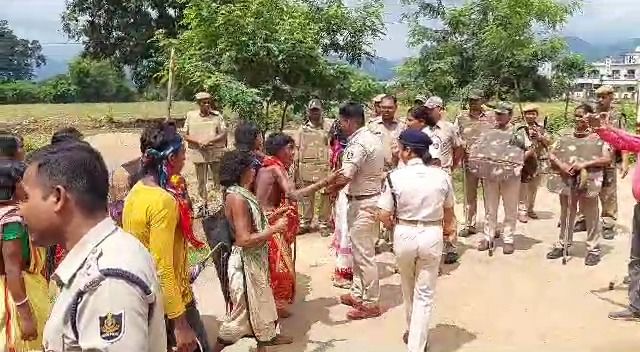
A Two-Decade Protest
Home to the Dongria Kondh, a “particularly vulnerable tribal group” in official parlance, Lakhpadar has been, since 2004, the epicentre of anti-mining protests and what is known as the Niyamgiri movement to stop a proposed bauxite mine by the transnational corporation Vedanta Aluminium Limited in Odisha’s Eastern Ghats.
Odisha holds over half of India’s bauxite reserves and 95% of those reserves lie in the state’s southeast, in what the mines department calls the Eastern Ghats Mobile Belt.
That is why, over 20 years, vast swathes of forests have been cleared for mining in the districts of Koraput, Rayagada and Kalahandi displacing at least half a million and sparking a migration of Adivasi and Dalit communities, according to a 2022 report published in the Journal of Environmental Management, a peer-reviewed global journal.
Odisha, the report said, had cleared about 1,655 sq km forest for mining, between 2001 and 2019, with half a million displaced, predominantly Adivasis.
There have been allegations of intimidation, skirmishes with the police, raids and detentions, and villagers over the years often accused police of stopping them from reaching public hearings or meetings, but in these 20 fractious years no one from Lakhpadar has ever been accused of rioting, much less terrorism.
The Niyamgiri movement
The Niyamgiri movement began in 2003 when the government of Odisha signed a memorandum of understanding (MoU) with Sterlite Industries to supply aluminium to Vedanta. The agreement provided for an alumina refinery and a bauxite mine in the Niyamgiri mountains, where the Dongria Kondh live and which they worship as sacred land, especially a mountain top they regard as the home of their deity, Niyam Raja.
Almost 90% of the 660-hectare mining lease area is sal forest, much of it maintained as community forests by the Dongria Kondh, according to this 2021 research paper.
On 18 April 2013, the Supreme Court said it was up to gram sabhas or village councils in the area to decide whether bauxite-mining leases, given by the state-run Odisha Mining Corporation (OMC), should proceed in the Niyamgiri hills.
This mine was intended to supply bauxite to Vedanta's alumina refinery in Lanjigarh village on the plains, nearly 40 km north of Lakhpadar. The Niyamgiri hills hold approximately 80 million tonnes of bauxite, most of it within the mountain where Dongria Kondh say the deity Niyam Raja dwells.
After the Supreme Court decision, all 12 gram sabhas in the area, with a jurisdiction of 112 villages, in an August 2013 referendum, unanimously voted against mining.
However, recent events, just months before state elections scheduled for 2024, have drawn attention to State-sponsored actions against Dalit and tribal activists, sparking concerns, said experts and activists, about a misuse of the rule of law and the rights of indigenous communities.
“Invoking UAPA cases against the Adivasis is a clear attempt by the government to muffle their voices and appease big corporates ahead of elections,” said tribal rights researcher Sandeep Patnaik. “There are numerous more instances which indicate that when the State feels weakened and threatened by the demands of citizens, which it does not want to adhere to, UAPA is used as a shielding weapon.”
A Protest Snowballs Into UAPA
While Bari, one of the activists detained on 5 August, was released on 6 August after the villagers protested outside the police station, Krushna was arrested the same day for an alleged rape case filed in 2018. He, alongwith one of the nine against whom UAPA cases were filed, remains in jail, as do the 24 others arrested, as we said, for blocking the Vedanta subcontractor.
Once the UAPA is invoked, agencies have 180 days to file a chargesheet, while bail is nearly impossible to obtain and often lands those accused in jail for years before trials even commence.
A UAPA case exacts a significantly heavier toll on individual liberty than regular prosecutions, experts have noted, with the least procedural protection for the most serious allegations that can be made under Indian criminal law.
According to a September 2022 report by the People’s Union of Civil Liberties (PUCL), an advocacy group, citing data from the National Crime Records Bureau (NCRB), less than 3% of arrests made under the UAPA between 2015 and 2020 resulted in convictions. The report discussed the increasing tendency of the union government’s prosecuting agencies to apply the UAPA, a tendency that is now apparent in some state police forces as well, such as Odisha’s.
Of 8,371 arrested under the UAPA nationwide, 235 were convicted in the five-year period, the PUCL report said. The acquittal rate of the law is 97.2%, the report said, arguing that the prosecution under UAPA lacked merit “in a huge majority of the cases”.
Around 3,900 UAPA cases were pending investigation across all states and union territories at the end of 2021, according to NCRB data. In 2019, the number was 3,993, and in 2020 it was 4,101.
In July 2020, lawyer Abhinav Sekhri wrote in Article 14 that “the vague, almost boundless, scope” of the UAPA allows for punishing “thought crimes”, where the act itself might matter less compared to the intentions allegedly imputed to a person.
“These allegations can only be refuted at trial,” wrote Sekhri, “in all probability being fought by the accused from behind bars, as the chances for securing bail are exceedingly small.”
No Money To Hire A Lawyer: Family
More than a month has passed since the protest that led to the UAPA cases, and the police have arrested Upendra Bag, (53), a farmer associated with the Niyamgiri Suraksha Samiti (NSS), a voluntary group of the Dongria Kondh community leading the Niyamgiri movement.
Upendra, one of those accused under the UAPA, has been in judicial custody since 7 August. His son Rashiko Bag said that it was difficult to apply for bail. “We do not have the money for a lawyer or keep going to court,” said Rashiko. “We just want him to be safe and be released as soon as possible.”
Locals alleged the FIR included the names of people who never came to the protest at K Singhpur police station. Among those mentioned in the FIR, for instance, is Lingraj Azad, a prominent figure in the NSS. Azad said he was in Bhawanipatna town, about 60 km to the north, when the protest was on.
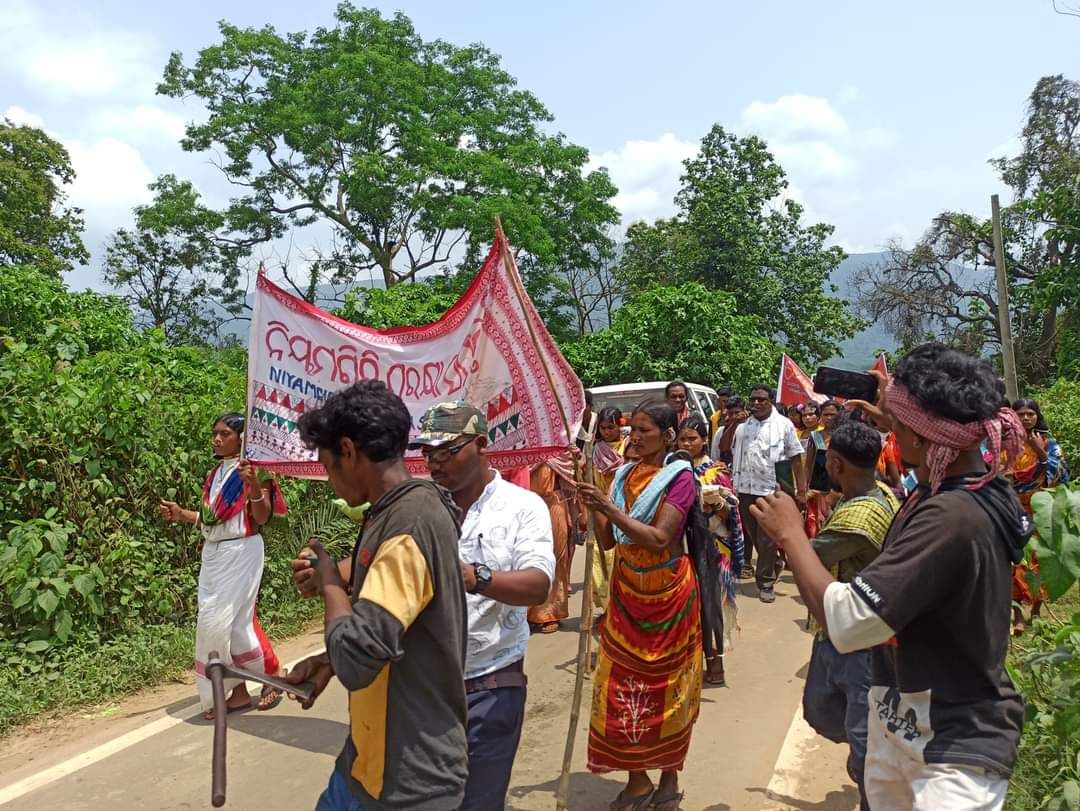
Critics said that the FIR's infirmities were evident in its identification of individuals absent from the scene. While the FIR refers to a gathering of around 200 people, it lists only nine.
Three others of the nine against whom UAPA charges have been filed—Lada Sikaka, Lenin Kumar and Drinju Krushka—are associated with the NSS. Many view this as a potential tool of intimidation against the protest movement.
“We will persist in advocating for people's rights, irrespective of the legal cases they may file against us,” Azad told Article 14.
The investigating officer in the case, deputy superintendent of police Rashmitanjan Senapati, refused to comment and said investigation into the allegations in the FIR was underway.
Article 14 sought comment from Rayagada superintendent of police Vivekananda Sharma, but he did not answer calls and messages on 7 September and 14 September. We will update this story if he responds.
Odisha steel and mines minister Prafulla Mallik said that no complaint had reached him. “If people are protesting and there are any issues about police excesses, they must raise their grievances with us,” Mallik told Article 14. “We can intervene only if a grievance reaches us. I have read about the issue, but we have not received any public grievance so far.”
Lada Sikaka of the NSS said the events of Rayagada were public knowledge. “How have our grievances not reached them?” said Sikaka, reacting to the minister’s contention that no one had complained. “If they are so concerned, they should take suo moto cognizance of the matter rather than letting the people suffer.”
The Demand To Withdraw UAPA Cases
The call to withdraw the UAPA cases for the August protest has gained momentum and widespread support from civil society organisations.
Prafulla Samantara, a leader from the National Alliance of People's Movements (NAPM), an advocacy group, criticised the use of the UAPA because protestors were carrying axes, a “cultural practice” of Dongria Kondh Adivasis. He argued there was no justification for linking the NSS to left-wing extremism.
The Alliance has demanded the dropping of all charges against Adivasi leaders and NSS supporters, that the police tell where those detained or arrested in August, and reveal if other cases have been filed that they do not know about.
The Alliance also called for “a fair inquiry” into the “questionable” FIR alleging rape against Krushna from 2018 and the release of the jailed farmer Upendra.
“Whole world knows that the historical NSS (sic) and its struggle to protect natural resources is a democratic and peaceful entity and your administration also knows this truth,” said a letter to chief minister Patnaik on 22 August.
“The said draconian law is misused as the organisation is not banned nor resorted to violence during agitation for last 20 years (sic),” said the letter, which alleged that Upendra was “physically and mentally assaulted during illegal confinement” of three days before he was produced before a magistrate.
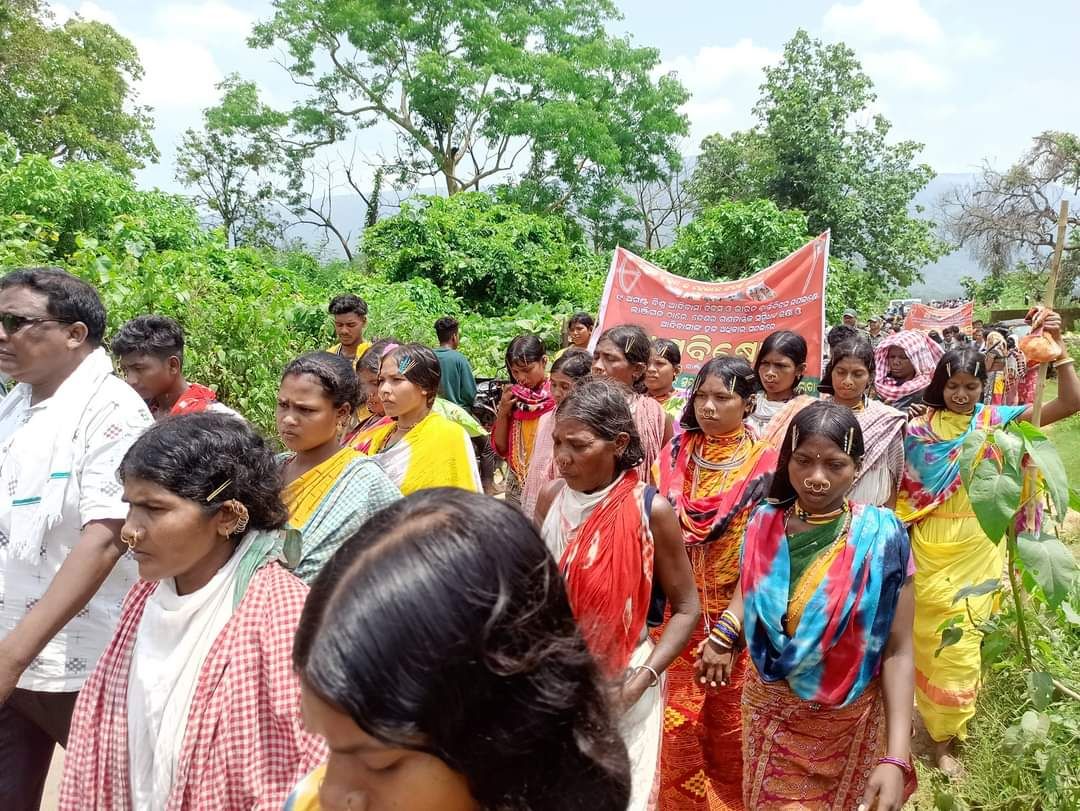
A Widening Crackdown
It appeared clear that the criminal cases and arrests around the events of 5 and 6 August were not isolated events.
On 12 August, 20 Adivasi and other activists for resisting mining. They face a criminal case that quotes 15 sections of the law, including rioting, attempted murder and criminal intimidation, under the IPC, under section 7 of the Criminal Law (Amendement) Act, 1932 , and section 25 of the Arms Act. On 8 August, they prevented officials from a company called Maitri, contracted by Vedanta to obtain local consent, from entering the area.
As per the Odisha Minor Mineral Concession Rules 2016, Vedanta, before starting work at the Sijimali bauxite mine in Rayagada’s Kashipur block had to meet gram sabhas (village councils) in six surrounding villages. Over the past few months, Maitri had organised public meetings in these villages to build trust.
When Maitri officials, escorted by a police team, reached Lakris village within the Talajhiri panchayat in Rayagada district, a large assembly of Adivasis armed with traditional weapons, such as lathis, axes and swords, stopped them. The protestors encircled the village and barred entry to company officials and the police.
On 29 August, Prafulla Samantara, a prominent social and environmental activist, reportedly went missing from his hotel room in Rayagada district, where he had come to address a press conference about the contentious issue of bauxite mining in the region.
Samantara said he was “abducted” by police in plain clothes and driven to his home in Berhampur town, more than 200 km east of Rayagada. The police said that they had received a complaint.
“We are looking into the complaint,” said inspector Kamalakant Kanhar, who heads the Rayagada police station. “We do not know which police team, if any, was involved.”
Samantara, who received the 2017 Goldman Environmental Prize, described the incident as “state-sponsored terrorism”.
“I was in Rayagada to address a press meet to expose the nexus between the government and industrial houses,” Samantara said at a press conference on 30 August at his Berhampur home. “But before I could address the media I was abducted by the police in plain clothes.” It’s a kind of state-sponsored terrorism.”
“This is a clear indication of how the state government is prioritising corporate interests over the welfare of the people,” said Samantara, who has filed a complaint at the Rayagada police station.
Activists alleged these incidents and Samantara’s abduction revealed a wider statewide crackdown on Adivasis.
“This escalation in legal actions against Adivasi activists underscores a growing concern about the erosion of civil liberties and human rights within the state,” said Drika Kadraka of the NSS. “The use of force and power to dismantle a movement is now new. Our movement did not rest after the Supreme Court Order (of 2013).”
“We continued to fight against such recurrent mining operations, which deprived people of their own land and resources,” said Kadraka. “Such acts as filing FIRs, and preventive detentions are just divisive, meant to weaken the strength.”
(Aishwarya Mohanty is an independent journalist based in Bhubaneswar, Odisha. She writes on gender, rural issues, social justice and the environment.)
Get exclusive access to new databases, expert analyses, weekly newsletters, book excerpts and new ideas on democracy, law and society in India. Subscribe to Article 14.

